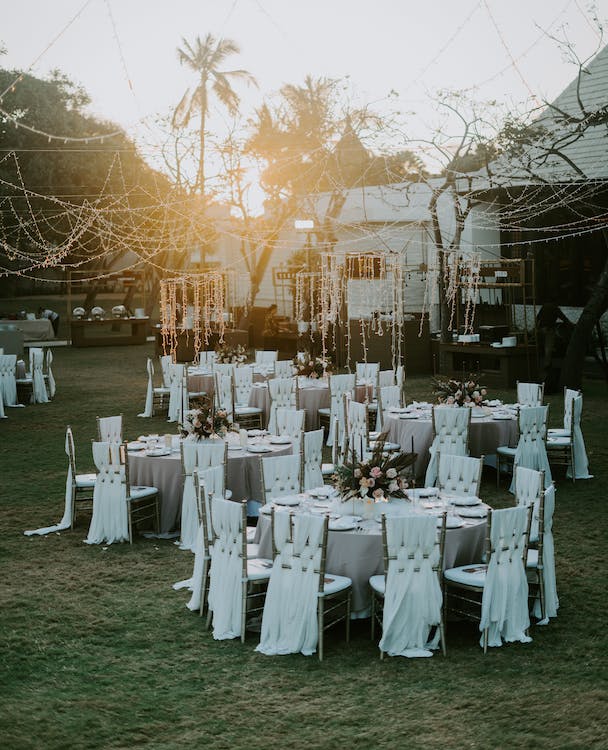
FAQ About Ultimate Guide to Wedding Planning

How do I create a seating arrangement for my wedding reception?
1. Start Early:
- Begin the seating arrangement process well in advance of your wedding day to allow time for adjustments and changes.
2. Get RSVPs:
- Wait until you have received the majority of RSVPs before finalizing the seating arrangement. This ensures you have the most accurate guest list.
3. Understand Your Venue:
- Familiarize yourself with the layout of your reception venue, including the location of tables, dance floor, and any special features.
4. Categorize Your Guests:
- Divide your guests into groups based on relationships, interests, or commonalities. Some categories might include family, friends, coworkers, or special groups like college friends.
5. Consider Special Needs:
- Take into account any special needs or considerations, such as elderly guests, families with children, or guests with dietary restrictions.
6. Create a Floor Plan:
- Use the venue's floor plan to map out where tables will be placed. Consider factors like the proximity to the dance floor, stage, and entrance.
7. Head Table Placement:
- Decide on the placement of the head table (if you're having one) and consider whether you want it in the center, facing the guests, or along one side of the room.
8. Table Shapes and Sizes:
- Choose the shapes and sizes of the tables. Common options include round, rectangular, or square tables. Be mindful of how many guests each table can accommodate.
9. Use a Seating Chart Tool:
- Utilize seating chart tools or apps to make the process more manageable. These tools often allow you to drag and drop guests and tables for easy adjustments.
10. Seat Guests Strategically:
- Place guests strategically by considering their relationships, personalities, and interests. Aim for a balanced mix at each table.
11. Consider Guest Comfort:
- Ensure that guests are comfortable with their seating arrangements. Avoid placing guests who may not get along at the same table.
12. Balance Table Occupancy:
- Try to balance the number of guests at each table to create a visually appealing and cohesive look in the room.
13. Assign Table Numbers or Names:
- Assign each table a number or a name and create a corresponding seating chart for guests to easily find their assigned tables.
14. Communicate Clearly:
- Clearly communicate the seating arrangements to your venue staff, ensuring they know where each table is located.
15. Be Flexible:
- Be prepared to make last-minute adjustments, especially if there are changes in RSVPs or unexpected situations.
16. Provide Escort Cards or a Seating Chart:
- Choose a method to inform guests of their assigned tables. Options include escort cards, a seating chart, or a digital display.
17. Stay Organized:
- Keep detailed notes and a copy of the seating arrangement for reference on the wedding day.
